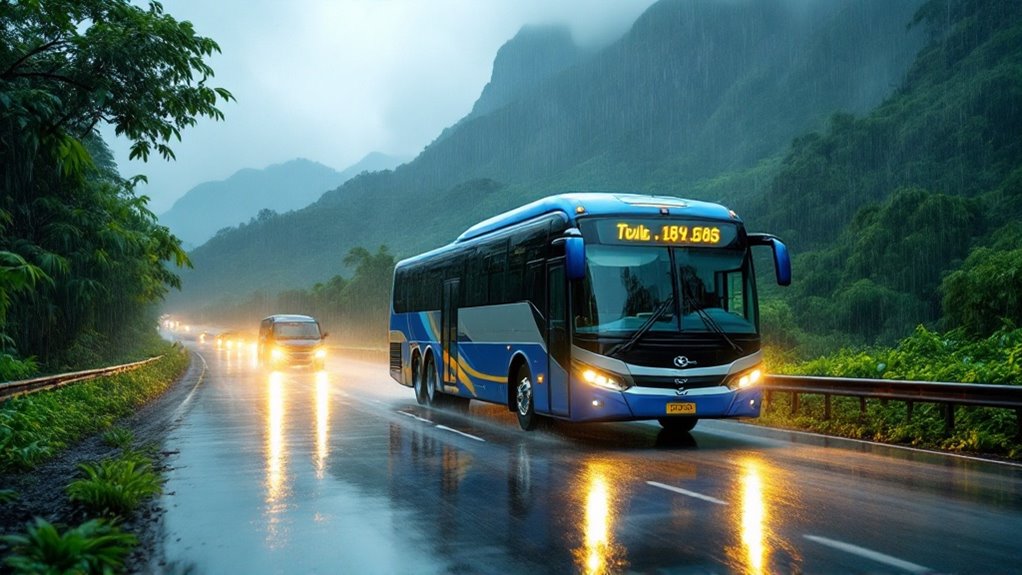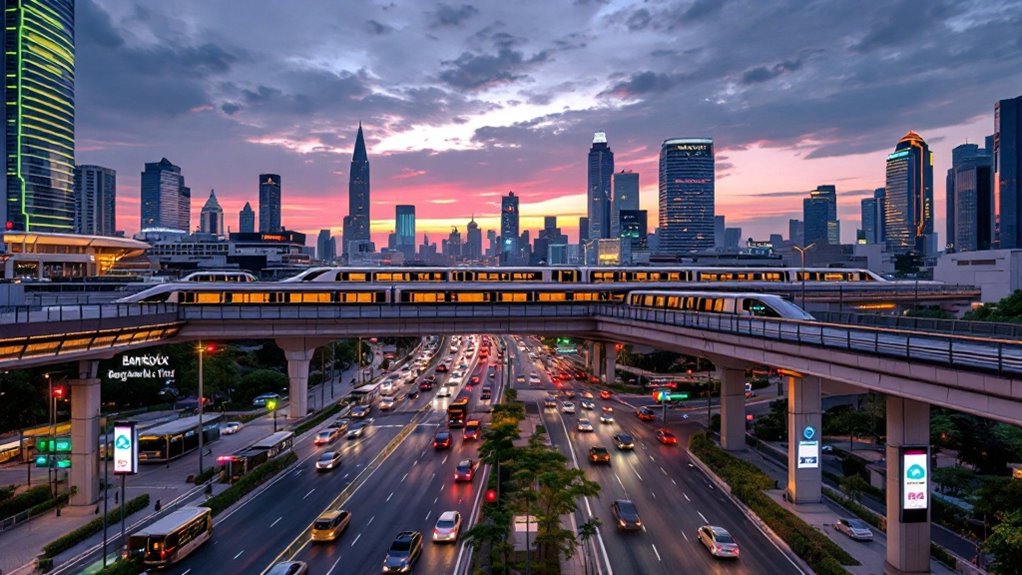Thailand’s state-run bus operator will overhaul 71 major bus routes starting May 1, 2025, to address rainy season challenges. The revised system includes 269 daily trips on both domestic and international lines, with 208 trips on 59 nationwide routes and enhanced links to Chiang Rai, Chiang Saen, and border destinations in Laos and Cambodia. Safety measures, updated fleets, and infrastructure improvements target up to 100,000 daily passengers—particularly during monsoon peaks—while fare increases are avoided. Further details illuminate the full scope of these changes.
As Thailand prepares for the annual monsoon, the country’s intercity bus network is undergoing a significant overhaul aimed at enhancing safety, capacity, and connectivity during the rainy season. Beginning May 1, 2025, 71 updated routes will become operational, encompassing 269 daily trips that span both domestic and cross-border destinations. Of these, 59 domestic routes account for 208 daily trips, with a strategic focus on northern provinces such as Chiang Rai and Chiang Saen, reflecting the region’s dominance through 21 distinct routes.
Additionally, 11 international routes will strengthen links to Laos and Cambodia, serving both immediate travel needs and longer-term regional integration goals. Weekend demand increases to approximately 100,000 passengers, highlighting the impact of increased travel activity during the rainy season.
Service frequency adapts to demand fluctuations, handling 5,000–6,000 trips per weekday for 80,000–90,000 passengers, and surging to approximately 7,000 trips carrying around 100,000 passengers on weekends and holidays. The northern corridor is a particular priority, offering 68 daily connections between Bangkok and the region, with the Bangkok–Chiang Rai route departing at 7:00 PM and maintaining a 722 THB fare.
Weekday bus services move up to 90,000 passengers, surging to 100,000 on weekends, with Bangkok–Chiang Rai departures a northern highlight.
Cross-border operations are expanding, with increased trips to border provinces such as Nong Khai and Aranyaprathet to accommodate growing international passenger flows. Enhanced passenger safety measures, including rigorous driver training and upgraded vehicle monitoring systems, are being integrated across all routes to address the challenges of wet weather travel.
Timetables and route priorities are being adjusted to account for monsoon conditions, with reduced-risk routes emphasized during peak rainfall in September and additional schedule buffers in flood-prone areas such as Chiang Saen. Enhanced vehicle maintenance, updated driver training protocols for wet-road navigation, and GPS fleet tracking support the network’s safety measures.
Emergency plans for flash floods and landslides are in place, and passengers receive weather alerts via mobile apps and station displays.
Rising seasonal demand, particularly driven by school holidays, tourism, and cross-border travel, is being met without fare increases. Fleet modernization continues, including the deployment of rain-ready and fuel-efficient buses, as well as infrastructure upgrades such as new maintenance hubs in Chiang Mai and Khon Kaen.
These changes are expected to support tourism, facilitate border trade, and generate employment, all while maintaining a focus on passenger safety and operational reliability during Thailand’s challenging rainy season.






